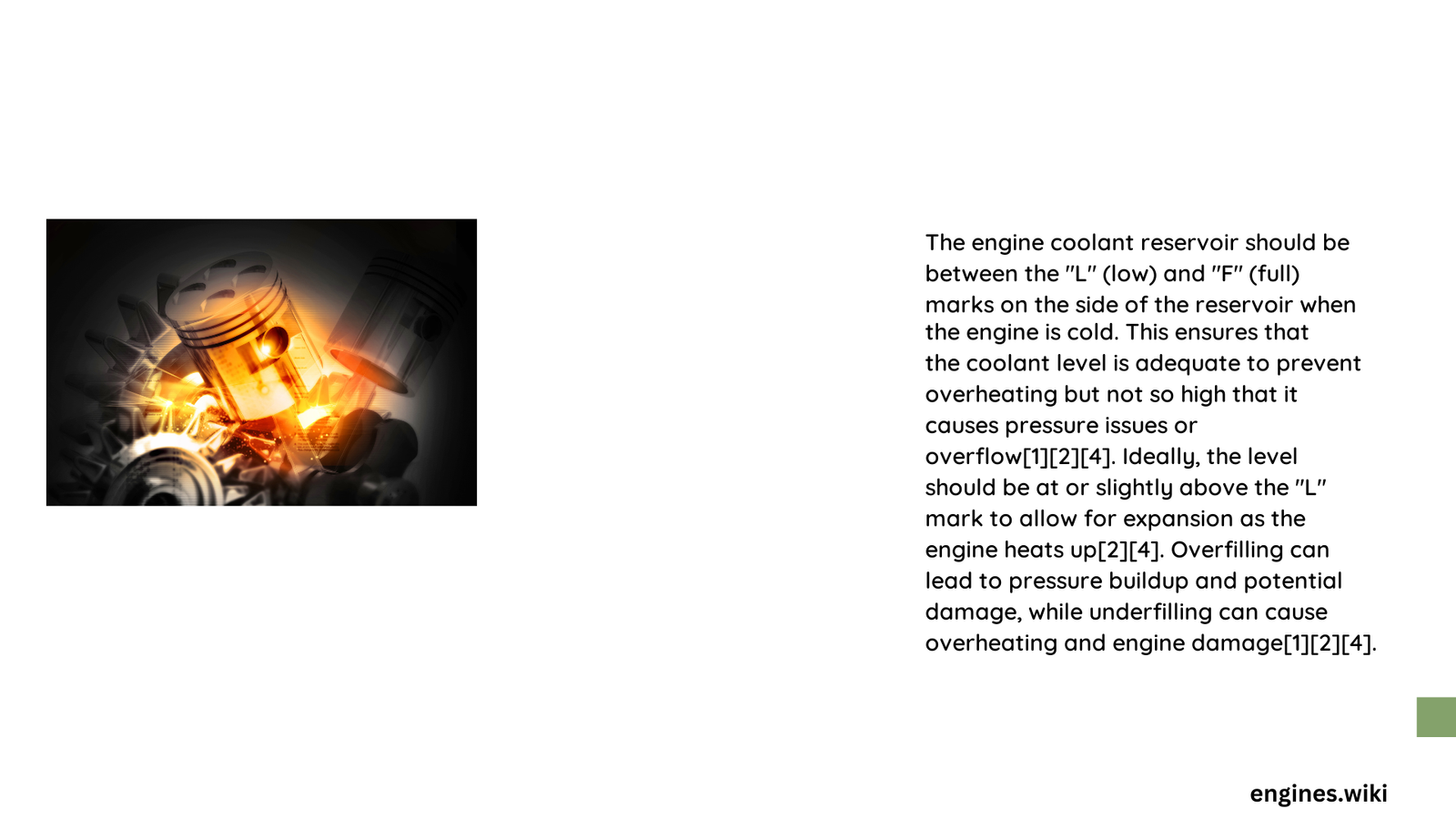Engine coolant management is critical for vehicle performance and longevity. The coolant reservoir should not always be completely full but maintained within specific manufacturer-recommended levels. Proper coolant level ensures optimal engine temperature regulation, prevents overheating, and protects critical engine components from thermal stress and potential damage.
What Determines the Correct Coolant Reservoir Level?
Why Does Coolant Level Fluctuate?
Coolant levels naturally change with temperature variations. When your engine is cold, the reservoir should be near the “FULL” or “MAX” mark. During operation, thermal expansion causes slight level increases, while cooling leads to contraction.
Key Factors Influencing Coolant Levels
| Factor | Impact on Coolant Level |
|---|---|
| Engine Temperature | Causes expansion and contraction |
| Ambient Temperature | Affects coolant volume |
| System Pressure | Influences reservoir capacity |
How to Check Coolant Reservoir Correctly?
Proper Coolant Level Verification Steps:
- Ensure engine is completely cool
- Park vehicle on level ground
- Locate transparent coolant reservoir
- Check level against marked indicators
- Verify level is between “MIN” and “MAX” lines
What Happens If Coolant Reservoir Is Overfilled?
Overfilling the coolant reservoir can lead to several potential issues:
- Increased system pressure
- Potential coolant leakage
- Risk of contaminating engine components
- Potential damage to reservoir seals
- Reduced cooling system efficiency
Can Low Coolant Levels Damage Your Engine?
Insufficient coolant can cause catastrophic engine damage, including:
- Overheating
- Warped cylinder heads
- Blown head gaskets
- Potential complete engine failure
- Reduced lubrication of critical components
When Should You Add Coolant?
Recommended Coolant Addition Guidelines:
- Add coolant when level is below “MIN” mark
- Use manufacturer-recommended coolant type
- Mix coolant with distilled water (50/50 ratio)
- Never add coolant to a hot engine
- Check levels during routine maintenance
How Often to Inspect Coolant Reservoir?
| Inspection Frequency | Recommended Action |
|---|---|
| Monthly | Visual level check |
| Every oil change | Comprehensive system inspection |
| Annually | Complete coolant system evaluation |
What Are Signs of Coolant System Problems?
Warning Indicators:
- Temperature warning light
- Sweet burning smell
- Steam from engine compartment
- Visible coolant leaks
- Inconsistent temperature readings
Pro Tips for Coolant Reservoir Maintenance
- Always use vehicle-specific coolant
- Replace coolant according to manufacturer recommendations
- Inspect reservoir for cracks or damage
- Monitor coolant color and consistency
- Consider professional inspection annually
Conclusion

Maintaining proper coolant reservoir levels is crucial for engine health. Regular monitoring, understanding fluctuations, and following manufacturer guidelines will help prevent costly repairs and ensure optimal vehicle performance.
